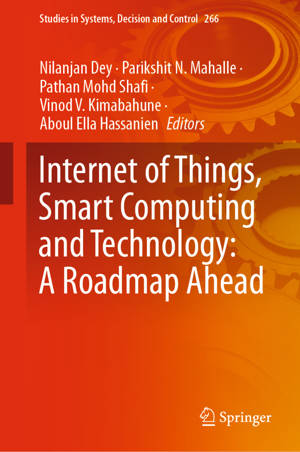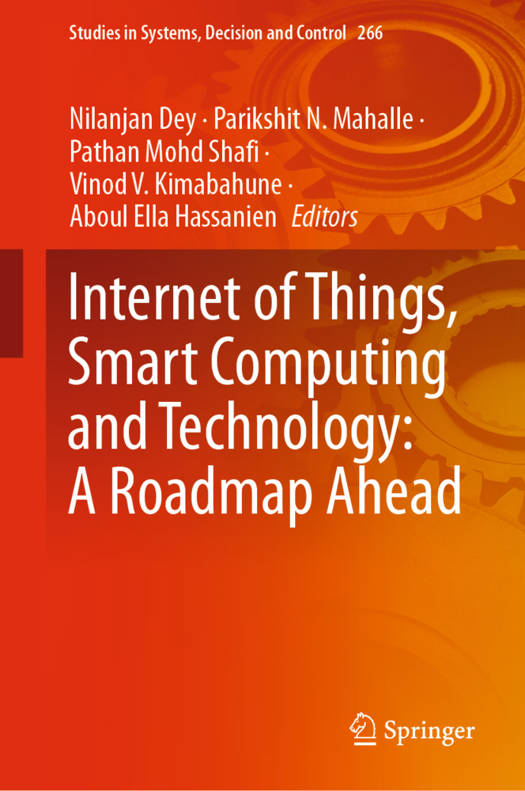
Je cadeautjes zeker op tijd in huis hebben voor de feestdagen? Kom langs in onze winkels en vind het perfecte geschenk!
- Afhalen na 1 uur in een winkel met voorraad
- Gratis thuislevering in België vanaf € 30
- Ruim aanbod met 7 miljoen producten
Je cadeautjes zeker op tijd in huis hebben voor de feestdagen? Kom langs in onze winkels en vind het perfecte geschenk!
- Afhalen na 1 uur in een winkel met voorraad
- Gratis thuislevering in België vanaf € 30
- Ruim aanbod met 7 miljoen producten
Zoeken
Internet of Things, Smart Computing and Technology: A Roadmap Ahead
€ 274,95
+ 549 punten
Omschrijving
This book addresses a broad range of topics concerning machine learning, big data, the Internet of things (IoT), and security in the IoT. Its goal is to bring together several innovative studies on these areas, in order to help researchers, engineers, and designers in several interdisciplinary domains pursue related applications. It presents an overview of the various algorithms used, focusing on the advantages and disadvantages of each in the fields of machine learning and big data. It also covers next-generation computing paradigms that are expected to support wireless networking with high data transfer rates and autonomous decision-making capabilities.
In turn, the book discusses IoT applications (e.g. healthcare applications) that generate a huge amount of sensor data and imaging data that must be handled correctly for further processing. In the traditional IoT ecosystem, cloud computing offers a solution for the efficient management of huge amounts of data, thanks to its ability to access shared resources and provide a common infrastructure in a ubiquitous manner. Though these new technologies are invaluable, they also reveal serious IoT security challenges. IoT applications are vulnerable to various types of attack such as eavesdropping, spoofing and false data injection, the man-in-the-middle attack, replay attack, denial-of-service attack, jamming attack, flooding attack, etc. These and other security issues in the Internet of things are explored in detail.
In addition to highlighting outstanding research and recent advances from around the globe, the book reports on current challenges and future directions in the IoT. Accordingly, it offers engineers, professionals, researchers, and designers an applied-oriented resource to support them in a broad range of interdisciplinary areas.
In turn, the book discusses IoT applications (e.g. healthcare applications) that generate a huge amount of sensor data and imaging data that must be handled correctly for further processing. In the traditional IoT ecosystem, cloud computing offers a solution for the efficient management of huge amounts of data, thanks to its ability to access shared resources and provide a common infrastructure in a ubiquitous manner. Though these new technologies are invaluable, they also reveal serious IoT security challenges. IoT applications are vulnerable to various types of attack such as eavesdropping, spoofing and false data injection, the man-in-the-middle attack, replay attack, denial-of-service attack, jamming attack, flooding attack, etc. These and other security issues in the Internet of things are explored in detail.
In addition to highlighting outstanding research and recent advances from around the globe, the book reports on current challenges and future directions in the IoT. Accordingly, it offers engineers, professionals, researchers, and designers an applied-oriented resource to support them in a broad range of interdisciplinary areas.
Specificaties
Betrokkenen
- Uitgeverij:
Inhoud
- Aantal bladzijden:
- 403
- Taal:
- Engels
- Reeks:
- Reeksnummer:
- nr. 266
Eigenschappen
- Productcode (EAN):
- 9783030390464
- Verschijningsdatum:
- 15/02/2020
- Uitvoering:
- Hardcover
- Formaat:
- Genaaid
- Afmetingen:
- 156 mm x 234 mm
- Gewicht:
- 762 g

Alleen bij Standaard Boekhandel
+ 549 punten op je klantenkaart van Standaard Boekhandel
Beoordelingen
We publiceren alleen reviews die voldoen aan de voorwaarden voor reviews. Bekijk onze voorwaarden voor reviews.








